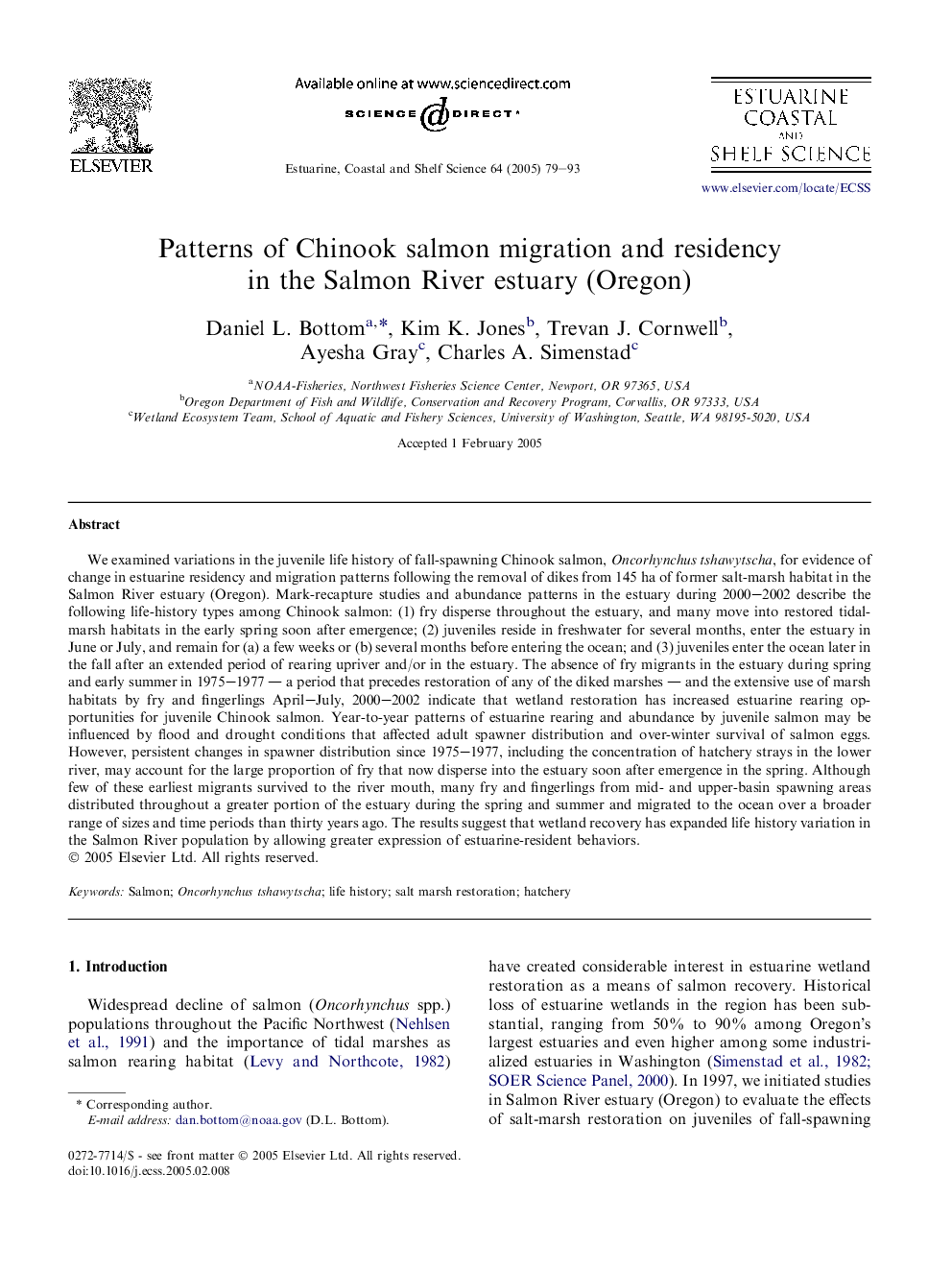| کد مقاله | کد نشریه | سال انتشار | مقاله انگلیسی | نسخه تمام متن |
|---|---|---|---|---|
| 9480837 | 1326781 | 2005 | 15 صفحه PDF | دانلود رایگان |
عنوان انگلیسی مقاله ISI
Patterns of Chinook salmon migration and residency in the Salmon River estuary (Oregon)
دانلود مقاله + سفارش ترجمه
دانلود مقاله ISI انگلیسی
رایگان برای ایرانیان
کلمات کلیدی
موضوعات مرتبط
مهندسی و علوم پایه
علوم زمین و سیارات
زمین شناسی
پیش نمایش صفحه اول مقاله

چکیده انگلیسی
We examined variations in the juvenile life history of fall-spawning Chinook salmon, Oncorhynchus tshawytscha, for evidence of change in estuarine residency and migration patterns following the removal of dikes from 145 ha of former salt-marsh habitat in the Salmon River estuary (Oregon). Mark-recapture studies and abundance patterns in the estuary during 2000-2002 describe the following life-history types among Chinook salmon: (1) fry disperse throughout the estuary, and many move into restored tidal-marsh habitats in the early spring soon after emergence; (2) juveniles reside in freshwater for several months, enter the estuary in June or July, and remain for (a) a few weeks or (b) several months before entering the ocean; and (3) juveniles enter the ocean later in the fall after an extended period of rearing upriver and/or in the estuary. The absence of fry migrants in the estuary during spring and early summer in 1975-1977 - a period that precedes restoration of any of the diked marshes - and the extensive use of marsh habitats by fry and fingerlings April-July, 2000-2002 indicate that wetland restoration has increased estuarine rearing opportunities for juvenile Chinook salmon. Year-to-year patterns of estuarine rearing and abundance by juvenile salmon may be influenced by flood and drought conditions that affected adult spawner distribution and over-winter survival of salmon eggs. However, persistent changes in spawner distribution since 1975-1977, including the concentration of hatchery strays in the lower river, may account for the large proportion of fry that now disperse into the estuary soon after emergence in the spring. Although few of these earliest migrants survived to the river mouth, many fry and fingerlings from mid- and upper-basin spawning areas distributed throughout a greater portion of the estuary during the spring and summer and migrated to the ocean over a broader range of sizes and time periods than thirty years ago. The results suggest that wetland recovery has expanded life history variation in the Salmon River population by allowing greater expression of estuarine-resident behaviors.
ناشر
Database: Elsevier - ScienceDirect (ساینس دایرکت)
Journal: Estuarine, Coastal and Shelf Science - Volume 64, Issue 1, July 2005, Pages 79-93
Journal: Estuarine, Coastal and Shelf Science - Volume 64, Issue 1, July 2005, Pages 79-93
نویسندگان
Daniel L. Bottom, Kim K. Jones, Trevan J. Cornwell, Ayesha Gray, Charles A. Simenstad,